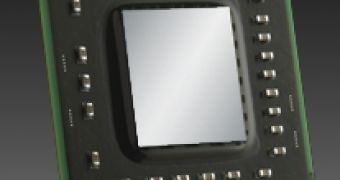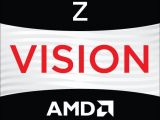We didn't much like holding back our knowledge about the Hondo accelerated processing unit from Advanced Micro Devices, but at least now the time for silence is at an end and we can introduce the chip to the world.
We've known about the processor and its purpose ever since IFA 2012. Called Z-60, it is an APU that succeeds the C60 used in older netbooks and nettops.
It isn't a SFF PC chip though (small form factor personal computer), but one that, AMD vows, will be used in the construction of thin tablets running Windows 8.
Performance-wise, the Z-60 is roughly the same as C-60, with its two 1GHz cores and AMD Radeon HD 6250 graphics.
But that's okay. For the Z-60 to match a PC chip (however small that PC happens to be) is an accomplishment, especially when the low TDP (4.5W instead of 9W) lets it make do without a cooling fan.
More than anything, this is what allows it to qualify as a platform useful in the design of 10mm-thick slates running Microsoft's new operating system.
And with the AMD AppZone app store and AppZone Player, all apps made for Android will be able to run on Windows without any hassle.
In other words, AMD Z-60-based tablets can completely bypass all software content shortage issue that would have arisen otherwise.
And here is where we reach the first disadvantage that AMD's Hondo has: it does not support Android and Linux, despite what earlier reports said.
At least it has most everything else of import: 1MB L2 cache, USB 3.0 support and a performance superior (visually at any rate) to any tablet platforms used at the moment. Back at IFA, during that private meeting we mentioned last month, we were shown a test where one of the few 3D benchmarking suites compatible with both Android and Windows ran on a Hondo-based tablet and ASUS Transformer Prime, if we remember right.
Sure, that may not be the newest and best slate available, but it is still noteworthy that the score was several times higher.
Add to that a battery life of up to 8 hours (up to six while playing HD/ Full HD 1080p video), HDMI support (1920 x 1200 resolution) and DirectX 11, and the company should have all it needs to convince PC makers that Z-60-powered tablets are a viable way to go, especially if it's true that Microsoft hasn't approved Intel Clover Trail tablets yet.
Alas, there is something that worries us. While AMD says that Orcs Must Die and even Modern Warfare 2 will play well at medium settings and 1,024 x 768 resolution, video playback will supposedly “provide the best experience” in HD, not Full HD. We aren't sure if it means 1080p will be jittery, and we really hope not.
At this point, we can only wait for Z-60 tablets to appear “later this year” and see for ourselves just how well each feature works. The mock-up we had in our hands at IFA 2012 was a thin slate of 11.6 inches, but we figure 10.1-inch and other tablets will be made, all with fast Wi-Fi reconnect, 25-second boot and 2-second resume from sleep.

 14 DAY TRIAL //
14 DAY TRIAL // 
